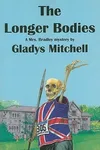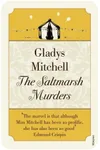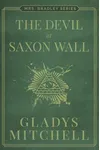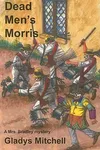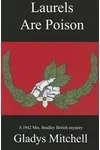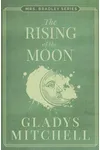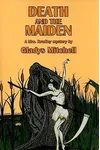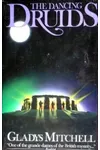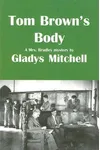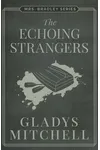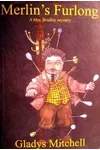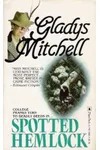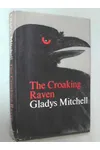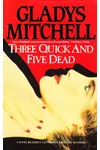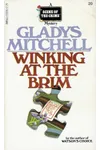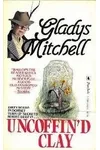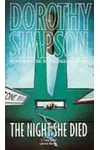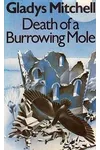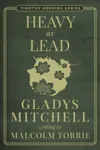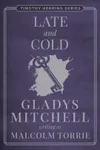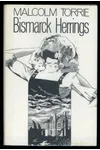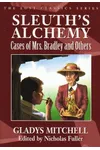Picture a British storyteller who spun tales of mystery with a wickedly sharp wit and a flair for the unconventional—meet Gladys Mitchell! Born in 1901, this Golden Age mystery writer crafted over 60 novels, most starring the unforgettable Mrs. Beatrice Adela Lestrange Bradley, a psychoanalyst-sleuth with a crocodile grin and a knack for unraveling crimes. A peer of Agatha Christie, Mitchell’s playful yet cerebral stories earned her a spot among the 'Big 3 Women Detective Writers' of the 1930s, blending psychology, folklore, and dark humor.
Mitchell’s work, though less celebrated today, offers a treasure trove of quirky characters and intricate plots that still captivate mystery lovers. Let’s dive into the life, stories, and lasting charm of this remarkable author!
The Making of Gladys Mitchell
Gladys Maude Winifred Mitchell was born on April 19, 1901, in Cowley, Oxford, to a Scottish market gardener and his wife, Annie. Educated at Rothschild School and The Green School, she later attended Goldsmiths College and University College London, earning a diploma in European history. Mitchell became a teacher, specializing in English, history, and athletics, and coached hurdles while teaching at schools like St. Paul’s in Brentford. Her early writing attempts in 1923 were rejected, but in 1929, her debut novel, Speedy Death, introduced Mrs. Bradley and launched a prolific career.
Influenced by Sigmund Freud and her friend, novelist Helen Simpson, Mitchell wove psychology and witchcraft into her stories. Her teaching career, which continued until 1961, gave her a keen eye for human behavior, shaping her complex characters and settings.
Gladys Mitchell’s Unforgettable Stories
Mitchell’s 66 Mrs. Bradley novels are the heart of her legacy, known for their bold twists and unconventional takes on the detective genre. Speedy Death (1929) shocked readers with its surprising plot twists, while The Saltmarsh Murders (1932) parodied Christie’s style with a village full of suspects and a murdered blackmailer. The Devil at Saxon Wall (1935) delved into witchcraft, blending folklore with psychological depth, and The Rising of the Moon (1945) explored supernatural themes with drowned boys and a mysterious water nymph.
Her style was daring—Mitchell mocked genre conventions, embraced eccentric themes like transvestism and the supernatural, and crafted intricate plots that challenged readers. Mrs. Bradley, with her sharp intellect and unorthodox methods, was a feminist icon ahead of her time, often solving cases in quirky settings like schools, coastal towns, or ancient ruins. Mitchell also wrote historical novels as Stephen Hockaby and detective stories as Malcolm Torrie, showcasing her versatility.
Though her output varied in quality, Mitchell’s wit, erudition, and vivid characters shone through. Her love of British landscapes, from Dorset to the Scottish Highlands, grounded her fantastical tales in richly detailed settings.
Why Gladys Mitchell Matters
Gladys Mitchell’s influence on the Golden Age of Detective Fiction lies in her fearless experimentation. As an early member of the Detection Club alongside Christie and Dorothy L. Sayers, she pushed boundaries, blending high-spirited storytelling with intellectual rigor. Her work inspired later mystery writers to explore psychological and supernatural themes, and Mrs. Bradley remains a trailblazing female detective.
Despite a dip in popularity after her death in 1983, Mitchell’s novels have seen a revival, with reprints by Random House and adaptations like the BBC’s The Mrs. Bradley Mysteries. Her ability to entertain and provoke ensures her place in mystery history, appealing to readers who crave wit and originality.
- Born: April 19, 1901, Cowley, Oxford
- Died: July 27, 1983, Corfe Mullen, Dorset
- Key Works: Speedy Death, The Saltmarsh Murders, The Rising of the Moon
- Awards: Crime Writers’ Association Silver Dagger (1976)
Snag The Saltmarsh Murders and dive into Gladys Mitchell’s wickedly clever world of mystery!


